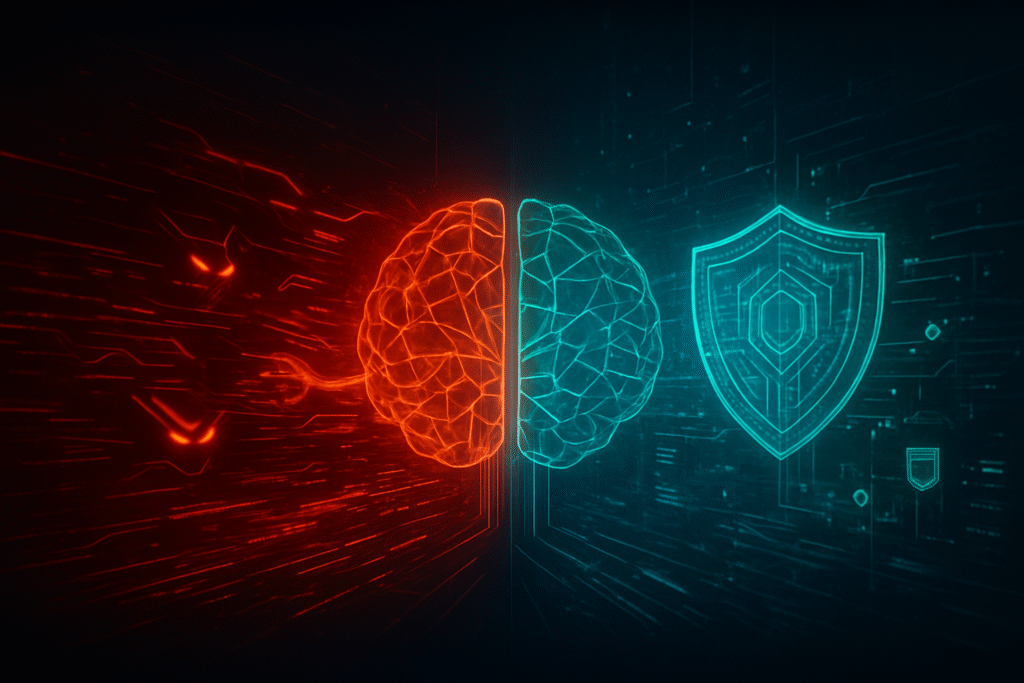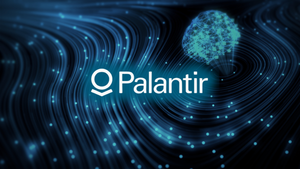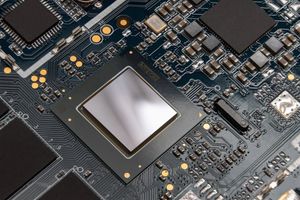
The cybersecurity landscape is undergoing a profound transformation, driven by the rapid advancements in Artificial Intelligence. What was once a realm of signature-based detections and human-intensive analysis has evolved into a dynamic "AI arms race," where both cybercriminals and defenders leverage intelligent systems to amplify their capabilities. This dual-edged nature of AI presents an unprecedented challenge, ushering in an era of hyper-sophisticated, automated attacks, while simultaneously offering the only viable means to detect, predict, and respond to these escalating threats at machine speed. As of late 2025, organizations globally are grappling with the immediate significance of this shift: the imperative to build robust cyber resilience through AI-powered defenses to withstand the relentless onslaught of AI-driven cybercrime.
The immediate significance of AI in cybersecurity lies in its paradoxical influence. On one hand, AI has democratized sophisticated attack capabilities, enabling threat actors to automate reconnaissance, generate highly convincing social engineering campaigns, and deploy adaptive malware with alarming efficiency. Reports in 2024 indicated a staggering 1,200% increase in phishing attacks since the rise of generative AI, alongside 36,000 automated vulnerability scans per second. This surge in AI-powered malicious activity has rendered traditional, reactive security measures increasingly ineffective. On the other hand, AI has become an indispensable operational imperative for defense, offering the only scalable solution to analyze vast datasets, identify subtle anomalies, predict emerging threats, and automate rapid responses, thereby minimizing the damage from increasingly complex cyber incidents.
Technical Deep Dive: The AI-Powered Offensive and Defensive Frontlines
The technical intricacies of AI's role in cyber warfare reveal a sophisticated interplay of machine learning algorithms, natural language processing, and autonomous agents, deployed by both adversaries and guardians of digital security.
On the offensive front, AI has revolutionized cybercrime. Generative AI models, particularly Large Language Models (LLMs), enable hyper-personalized phishing campaigns by analyzing public data to craft contextually relevant and grammatically flawless messages that bypass traditional filters. These AI-generated deceptions can mimic executive voices for vishing (voice phishing) or create deepfake videos for high-stakes impersonation fraud, making it nearly impossible for humans to discern legitimacy. AI also empowers the creation of adaptive and polymorphic malware that continuously alters its code to evade signature-based antivirus solutions. Furthermore, agentic AI systems are emerging, capable of autonomously performing reconnaissance, identifying zero-day vulnerabilities through rapid "fuzzing," and executing entire attack chains—from initial access to lateral movement and data exfiltration—at machine speed. Adversarial AI techniques, such as prompt injection and data poisoning, directly target AI models, compromising their integrity and reliability.
Conversely, AI is the cornerstone of modern defensive strategies. In anomaly detection, machine learning models establish baselines of normal network, user, and system behavior. They then continuously monitor real-time activity, flagging subtle deviations that indicate a breach, effectively identifying novel and zero-day attacks that traditional rule-based systems would miss. For threat prediction, AI leverages historical attack data, current network telemetry, and global threat intelligence to forecast likely attack vectors and vulnerabilities, enabling organizations to proactively harden their defenses. This shifts cybersecurity from a reactive to a predictive discipline. In automated response, AI-powered Security Orchestration, Automation, and Response (SOAR) platforms automate incident workflows, from prioritizing alerts to quarantining infected systems, blocking malicious IPs, and revoking compromised credentials. Advanced "agentic AI" systems, such as those from Palo Alto Networks (NASDAQ: PANW) with its Cortex AgentiX, can autonomously detect email anomalies, initiate containment, and execute remediation steps within seconds, drastically reducing the window of opportunity for attackers.
Market Dynamics: Reshaping the AI Cybersecurity Industry
The burgeoning intersection of AI and cybersecurity is reshaping market dynamics, attracting significant investment, fostering innovation among startups, and compelling tech giants to rapidly evolve their offerings. The global cybersecurity AI market is projected to reach USD 112.5 billion by 2031, reflecting the urgent demand for intelligent defense solutions.
Venture capital is pouring into AI-powered cybersecurity startups, with over $2.6 billion raised by VC-backed AI cybersecurity startups this year alone. Companies like Cyera, an AI-powered data security startup, recently closed a $300 million Series D, focusing on securing data across complex digital landscapes. Abnormal Security utilizes AI/ML to detect advanced email threats, securing a $250 million Series D at a $5.1 billion valuation. Halcyon, an anti-ransomware firm, leverages AI trained on ransomware to reverse attack effects, recently valued at $1 billion after a $100 million Series C. Other innovators include Hunters.AI with its AI-powered SIEM, BioCatch in behavioral biometrics, and Deep Instinct, pioneering deep learning for zero-day threat prevention. Darktrace (LON: DARK) continues to lead with its self-learning AI for real-time threat detection and response, while SentinelOne (NYSE: S) unifies AI-powered endpoint, cloud, identity, and data protection.
For tech giants, the AI cybersecurity imperative means increased pressure to innovate and consolidate. Companies like Palo Alto Networks (NASDAQ: PANW) are investing heavily in full automation with AI agents. Check Point Software Technologies Ltd. (NASDAQ: CHKP) has strategically acquired AI-driven platforms like Veriti and Lakera to enhance its security stack. Trend Micro (TYO: 4704) and Fortinet (NASDAQ: FTNT) are deeply embedding AI into their offerings, from threat defense to security orchestration. The competitive landscape is a race to develop superior AI models that can identify and neutralize AI-generated threats faster than adversaries can create them. This has led to a push for comprehensive, unified security platforms that integrate AI across various domains, often driven by strategic acquisitions of promising startups.
The market is also experiencing significant disruption. The new AI-powered threat landscape demands a shift from traditional prevention to building "cyber resilience," focusing on rapid recovery and response. This, coupled with the automation of security operations, is leading to a talent shortage in traditional roles while creating new demand for AI engineers and cybersecurity analysts with AI expertise. The rapid adoption of AI is also outpacing corporate governance and security controls, creating new compliance and ethical challenges that more than a third of Fortune 100 companies now disclose as 10-K risk factors.
Wider Significance: AI's Transformative Impact on Society and Security
The wider significance of AI in cybersecurity extends far beyond technical capabilities, deeply embedding itself within the broader AI landscape and exerting profound societal and ethical impacts, fundamentally redefining cybersecurity challenges compared to past eras.
Within the broader AI landscape, cybersecurity is a critical application showcasing the dual-use nature of AI. It leverages foundational technologies like machine learning, deep learning, and natural language processing, much like other industries. However, it uniquely highlights how AI advancements can be weaponized, necessitating a continuous cycle of innovation in both offense and defense. This reflects a global trend of industries adopting AI for efficiency, but with the added complexity of combating intelligent adversaries.
Societally, AI in cybersecurity raises significant concerns. The reliance on vast datasets for AI training fuels data privacy concerns, demanding robust governance and compliance. The proliferation of AI-generated deepfakes and advanced social engineering tactics threatens to erode trust and spread misinformation, making it increasingly difficult to discern reality from deception. A digital divide is emerging, where large enterprises can afford advanced AI defenses, leaving smaller businesses and less developed regions disproportionately vulnerable to AI-powered attacks. Furthermore, as AI systems become embedded in critical infrastructure, their compromise could lead to severe real-world consequences, from physical damage to disruptions of essential services.
Ethical considerations are paramount. Algorithmic bias, stemming from training data, can lead to skewed threat detections, potentially causing discriminatory practices. The "black box" nature of many advanced AI models poses challenges for transparency and explainability, complicating accountability and auditing. As AI systems gain more autonomy in threat response, determining accountability for autonomous decisions becomes complex, underscoring the need for clear governance and human oversight. The dual-use dilemma of AI remains a central ethical challenge, requiring careful consideration to ensure responsible and trustworthy deployment.
Compared to past cybersecurity challenges, AI marks a fundamental paradigm shift. Traditional cybersecurity was largely reactive, relying on signature-based detection for known threats and manual incident response. AI enables a proactive and predictive approach, anticipating attacks and adapting to new threats in real-time. The scale and speed of threats have dramatically increased; AI-powered attacks can scan for vulnerabilities and execute exploits at machine speed, far exceeding human reaction times, making AI-driven defenses indispensable. Moreover, AI-powered attacks are vastly more complex and adaptive than the straightforward viruses or simpler phishing schemes of the past, necessitating defenses that can learn and evolve.
The Horizon: Future Developments and Emerging Challenges
Looking ahead, the evolution of AI in cybersecurity promises both revolutionary advancements and escalating challenges, demanding a forward-thinking approach to digital defense.
In the near-term (next 1-5 years), we can expect significant strides in enhanced threat detection and response, with AI systems becoming even more adept at identifying sophisticated threats, reducing false positives, and automating incident response. AI-driven behavioral biometrics will become more prevalent for identity management, and predictive capabilities will allow organizations to anticipate attacks with greater accuracy. The generative AI market in cybersecurity is projected to grow almost tenfold between 2024 and 2034, used to detect and neutralize advanced phishing and deepfakes. Gartner predicts that by 2028, over 50% of enterprises will use AI security platforms to protect their AI investments, enforcing policies and applying consistent guardrails.
The long-term future (beyond 5 years) points towards increasingly autonomous defense systems, where AI can identify and neutralize threats without constant human oversight, redefining the role of security professionals. The development of quantum-resistant security will likely involve AI by 2030 to safeguard data against future quantum computing threats. Privacy-preserving AI solutions will become crucial to enhance security while addressing data privacy concerns. Experts also predict the rise of multi-agent systems where groups of autonomous AI agents collaborate on complex defensive tasks, although threat actors are expected to be early adopters of such systems for offensive purposes. Some forecasts even suggest the emergence of superintelligent AI by 2035-2040, which would bring about profound changes and entirely new cybersecurity challenges.
However, these advancements are accompanied by significant challenges. The "AI arms race" means cybercriminals will continue to leverage AI for more sophisticated, automated, and personalized attacks, including advanced malware generation, deepfake attacks, and AI-powered ransomware. Adversarial AI will remain a critical threat, with attackers manipulating AI algorithms to evade detection or compromise model integrity. Data privacy concerns, the computational overhead of AI systems, and the global skill deficit in AI cybersecurity will also need continuous attention.
Experts predict a sustained "cyber arms race," emphasizing autonomous security and proactive defenses as key trends. Regulatory scrutiny and AI governance frameworks, such as the EU AI Act, will intensify to manage risks and ensure transparency. While AI automates many tasks, human-AI collaboration will remain crucial, with human experts focusing on strategic management and complex problem-solving. The focus of cybersecurity will shift from merely protecting confidentiality to safeguarding the integrity and provenance of information in a world saturated with synthetic media. The global AI in cybersecurity market is projected to reach $93.75 billion by 2030, underscoring the massive investment required to stay ahead.
Comprehensive Wrap-up: Navigating the AI-Driven Cyber Frontier
The integration of Artificial Intelligence into cybersecurity marks a pivotal moment in digital history, fundamentally reshaping the dynamics of threat and defense. AI is undeniably the most significant force in contemporary cybersecurity, acting as both the primary enabler of sophisticated cybercrime and the indispensable tool for building resilient defenses.
The key takeaways are clear: AI empowers unprecedented threat detection, automates critical security operations, enables proactive and predictive defense strategies, and fosters adaptive systems that evolve with the threat landscape. However, this power is a double-edged sword, as adversaries are equally leveraging AI to launch hyper-sophisticated, automated, and personalized attacks, from deepfake phishing to self-mutating malware. Effective cybersecurity in this era necessitates a collaborative approach where AI augments human intelligence, acting as a "virtual analyst" to handle the sheer volume and complexity of threats.
Historically, the journey from early computing threats to today's AI-driven cyber warfare has been marked by a continuous escalation of capabilities. The advent of machine learning, deep learning, and most recently, generative AI, has propelled cybersecurity from reactive, signature-based defenses to proactive, adaptive, and predictive systems. This evolution is as significant as the internet's widespread adoption or the rise of mobile computing in terms of its impact on security paradigms.
The long-term impact will see a fundamental shift in the roles of security professionals, who will transition from manual threat hunting to supervising AI systems and managing strategic decisions. The cybersecurity market will continue its explosive growth, driven by relentless innovation and investment in AI-infused solutions. Ethical and regulatory considerations, particularly concerning privacy, accountability, and the dual-use nature of AI, will become central to policy-making. The convergence of cyber and physical threats, exacerbated by AI misuse, will demand integrated security planning across all critical infrastructure.
In the coming weeks and months (late 2025 and beyond), watch for the accelerated emergence of AI agents and multi-agent systems, deployed by both attackers and defenders for increasingly autonomous operations. Expect a continued rise in the sophistication of AI-powered attacks, particularly in hyper-personalized social engineering and adaptive malware. A heightened focus on securing AI systems themselves, including LLMs and RAG workflows, will drive demand for specialized security solutions. The evolution of zero-trust strategies to include real-time, AI-driven adaptive access controls will be critical. Finally, governments will continue to grapple with regulatory frameworks for AI, with the implementation and impact of acts like the EU AI Act setting new global benchmarks for AI governance in critical sectors. The AI era demands not just technological prowess, but also profound ethical consideration, strategic foresight, and agile adaptation to secure our increasingly intelligent digital world.
This content is intended for informational purposes only and represents analysis of current AI developments.
TokenRing AI delivers enterprise-grade solutions for multi-agent AI workflow orchestration, AI-powered development tools, and seamless remote collaboration platforms.
For more information, visit https://www.tokenring.ai/.





